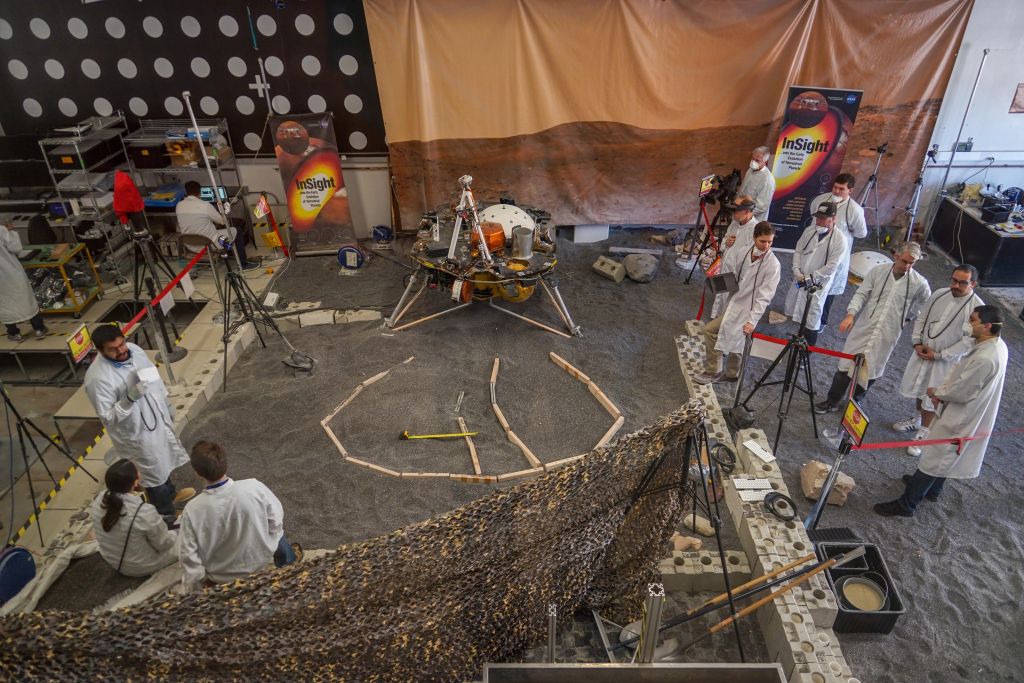This is sad news. After finding what seemed like a solution to the Mole’s difficulties on Mars, engineers are stymied again. The Mole, or Heat Flow and Physical Properties Package (HP3) has bounced half-way out of its hole.
It’s like Groundhog Day on Mars. If the Mole bounces out of its hole, it means six more weeks of engineers scratching their heads to come up with a solution.
It’s been a plot full of twists and turns for the Mole. After being carefully deployed by the InSight Lander’s instrument arm, the Mole seemed to be making progress. Then only a few centimeters into the Martian ground, it stopped.
NASA and the DLR (German Aerospace Center) are partners on the InSight Lander. The DLR designed and built the Mole. At first both agencies suspected that the Heat Probe had struck a rock. They tried to find a work around here on Earth, where they have test beds and mock landers.

Eventually they realized that they had struck an unusual kind of sub-surface soil called duracrust. The Mole relies on friction with the surrounding soil to penetrate into Mars, but the duracrust wasn’t cooperating. It stubbornly refused to fall into the hole around the Mole, depriving it of the necessary friction.
Engineers tried using the scoop on the end of the instrument arm to push surface soil into the Mole’s hole, but that didn’t work. Then they tried what they called “pinning” the Mole against the side of the hole with the instrument arm scoop, to supply the needed friction. It looked like that was working, and the Mole started penetrating again.
But now we get the sad news that the Mole has popped out of its hole.
In a press release, NASA says they’re working on a plan. But what the next steps will be is unknown at this time. There’s not a ton of options: the Mole can’t be removed and redeployed.
“After making progress over the past several weeks digging into the surface of Mars, InSight’s mole has backed about halfway out of its hole this past weekend. Preliminary assessments point to unusual soil conditions on the Red Planet. The international mission team is developing the next steps to get it buried again.”
NASA and the DLR would like to move the instrument arm and its scoop away from the Mole to get a better look. But that’s a tricky maneuver. Obviously, everything has to be done very carefully.
NASA Associate Administrator Thomas Zurbuchen chimed in on Twitter.
Even without the Mole, the InSight lander is still regarded as a success. According to Zurbuchen, the Heat Probe is not a so-called Level 1 for mission success. The Seismometer and other instruments are functioning correctly.
Still, the loss of the Mole would be a big blow.
InSight’s job is to understand Mars’ interior structure. SEIS, the seismometer, can tell scientists a lot about the interior structure of Mars by listening to Marsquakes and measuring how they travel through the planet. But the Mole has a key role to play, too, and without it crucial data will be missing.
That would be a big blow to the mission.

